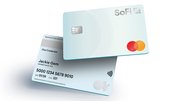Blog
How to recognize an ATM paper shell game
As a buyer, you have the right to the exact type and quality of ATM paper you were promised. But how do you know when you’re being scammed?

June 28, 2016 by Ben Meeks — Owner, Brian Kirk Copywriting
The ATM paper supply industry has become increasingly competitive over the last several years, as digital applications reduce the use of paper receipts and transactional forms, forcing fewer manufacturers to fight over thinner slices of a smaller pie.
At the same time, financial institutions are feeling the brunt of a sluggish economy and looking for ways to cut costs across all business sectors, including paper supply.
A shrinking marketplace combined with added pressures on financial institutions to lower their paper costs has created an environment in which some paper suppliers are desperate to find ways to remain competitive while maintaining a workable profit margin.
Most suppliers are achieving price cuts through one or more of the following ways:
- responsible reductions to overhead;
- more efficient uses of staff and machinery; and
- misleading customers about the quality and quantity of paper they're purchasing.
Unfortunately, the third method has become all too common with suppliers using unethical and misleading techniques to win business based primarily on price.
Be warned: Given the prevalence of these techniques, the odds that you have encountered one of them at some point are high.
Following are the most common paper scams:
1) Paper shorting
In this instance, the supplier provides less paper than quoted. This can happen in one of two ways:
- The supplier quotes a certain paper length, but supplies a shorter paper roll, resulting in fewer receipts per roll and a higher cost per receipt than quoted. The difference in length is usually minimal, which makes this scam difficult to see or catch on a machine, but it’s no accident.
Have your supplier confirm the paper specs in writing, and have your technician inspect a sample roll to make sure it matches the order. - The supplier loosens paper rolls to make them look larger than they really are. Here’s how you check for this scam: Push on the center of the roll, and see if there’s any give. If the paper cones out, this means it’s loose and might produce fewer receipts than it should.
ATM paper rolls should be tightly wound to generate a maximum number of ATM receipts, giving you more bang for your buck.
2) Product swaps
As experienced suppliers know, certain types of paper work better with certain makes and models of machines, facilitating smoother operation with fewer disruptions due to paper jams and other problems.
The wrong paper type — or low-grade paper in general — not only will jam the printer and cause the paper to tear, but it also can scratch the print head, which can require costly repairs.
Higher quality paper — and the product expertise required to match the right paper to a machine — costs more. Not a lot more, but possibly enough to persuade the buyer to choose a lower-cost option not realizing that the inferior product they are could actually increase ATM operating costs due to machine unavailability or repairs made necessary by a problem with inferior-grade paper.
Frankly, it is difficult to know whether the paper you purchased is right for your machine, and that it is truly from the lumberyard specified, and not from another lower-quality source — often overseas.
Savvy technicians might be able to determine these things, but it usually comes down to asking direct questions and trusting your source.
As a buyer, you have the right to the exact type and quality of paper you were promised. But how do you know when you’re being scammed?
First, ask to have your paper tested to make sure it has the features you paid for. Experienced suppliers with conscientious customer service will have no problem supplying verification to make their customers comfortable and earn their trust.
If your supplier is unwilling — or claims to be unable — to provide such verification, this should raise a red flag.
Second, do background research on your paper supplier. How long have they been in business? Who are their other customers?
Visit their manufacturing plant and make sure it meets your standards. How is their customer service? Do you trust your sales rep?
Establishing a trusting relationship with a reputable paper supplier is the best way to avoid falling victim to scams.
What's more, finding and staying with a single supplier could save you money over time, as volume needs can be anticipated, ordering simplified, and manufacturing streamlined, all of which lower the end cost of quality paper.
photo istock













